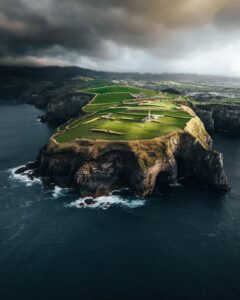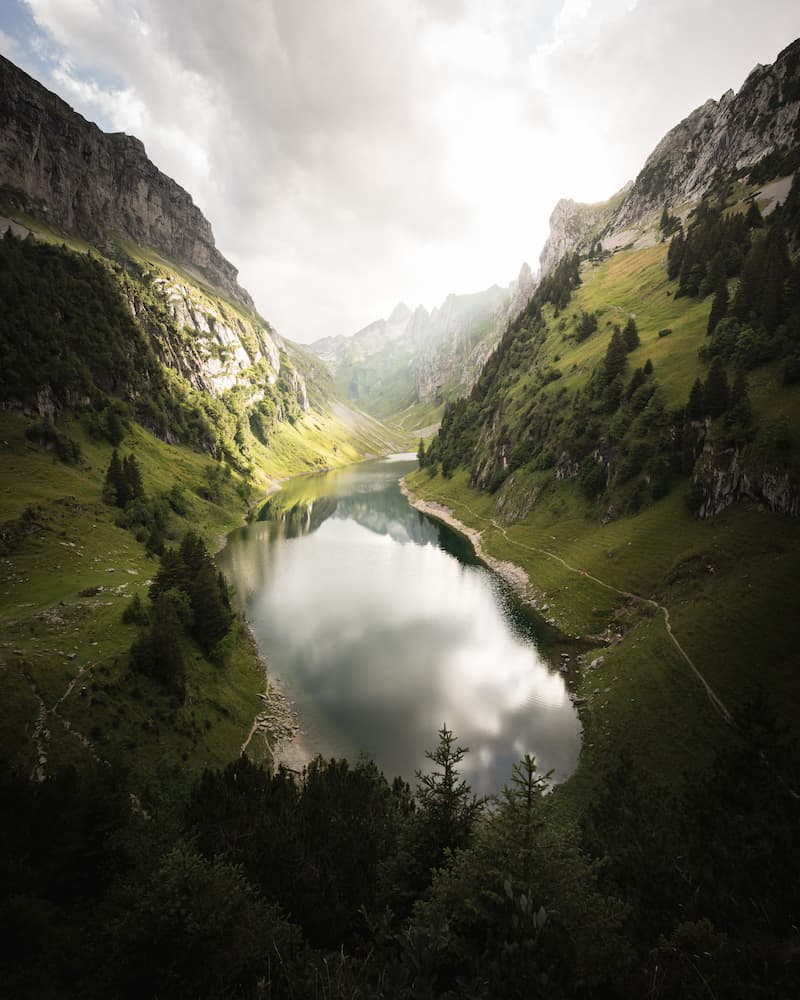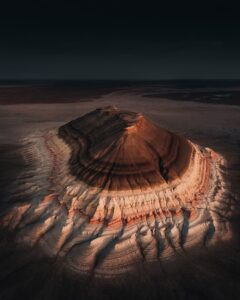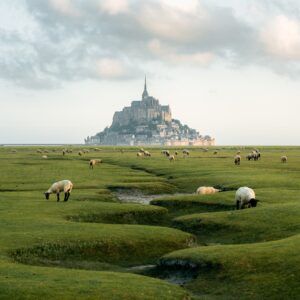
Photo tour in Azores, Portugal
Join us in the Azores for a unique photo tour, where you’ll elevate your creative skills with expert guidance from Ronald Soethje, Bruno Ázera, and Nomadict.
Dave is a Swiss-based landscape photographer with a lifelong passion for capturing the world’s beauty through his lens. Living in Switzerland, he’s drawn to the majestic mountains, where he finds inspiration for most of his landscape shots. Dave believes in the power of location, the significance of light and conditions, the art of composition, and the impact of post-processing to create truly remarkable photographs. All these ingredients made his winning picture!
I am a Swiss-based photographer. Since I was a child, photography has fascinated me. When I was eleven years old, my mother let me use her SLR, which I then took on vacations with the family. I shot everything from people to cars to airplanes to landscapes and so on, everywhere we went. But it was still the time of analog photography, and I always wondered if I should take the shot since I only had one or two films with 24 – 36 photos per vacation.
Luckily, we went on vacation regularly, and I had many opportunities to explore and photograph new places. Occasionally, we visited foreign countries like the USA, France, Italy, and Greece. Still, we mostly stayed in Switzerland and spent the holidays in the mountains, which was also very exciting because it was very different from the city we lived in. I always loved exploring foreign lands or helping the Swiss mountain farmer clean out the cowshed. This desire to discover the world, my curiosity, is the origin of my love of travel. And I tend not to travel to the same places twice because I always want to discover something new.
Over the years, I have traveled to many beautiful countries and was overwhelmed by the beauty of nature again and again. This beauty motivated me to do landscape photography, to capture and take home a little of it. However, I also love photographing people on my travels, which gives me access to the locals, especially in Asia, where people generally like to be photographed. I do not want to limit myself to a specific photography genre and enjoy experimenting.
In Switzerland, where I live, I am particularly drawn to the mountains. The alpine world is the only place in this country that retains originality. I love the raw beauty and isolation of the region, where the forces of nature predominate but are also full of life. It’s a place where I can reflect and indulge another of my passions: hiking. Most of my landscape photographs come from this Swiss mountain world.
Four valuable lessons you have learned along the way, personally or professionally are:
1) The best camera is the one you have with you. Take advantage of the opportunity to capture a beautiful scene just because you left your big camera at home. Often, it doesn’t matter what gear you use, but capturing the moment and the atmosphere and expressing what you feel is much more important than achieving the best possible image quality.
2) I have to prepare myself before I go on location. Exploring is fun, but researching the place in advance can make a huge difference. It starts with simple things like taking into account the time needed to get to the area from the car park, such as checking the weather forecast, etc. Nowadays, there are amazing ways to inform ourselves in advance, such as Google Earth, Photopills, weather forecast apps, and so on, and we should take advantage of these helpful options.
3) Besides preparation, it is also important not to stick to one idea only but to remain open to what the moment brings. Often, something completely unexpected happens, allowing you to get a shot you never dreamed of. So, be patient if the sunset doesn’t seem to be colorful. You might be disappointed if you leave too early! I think trying out new things and looking outside the box to develop further is also important.
4) The importance of post-processing, especially when shooting in raw. It’s a vital part of the creation process and allows us to create the image as we perceive it on location.
It was a long hike in the mountains of the Swiss Alpstein region, and I was running a little late. The day was already done, and two hours were still to go. However, it was such a beautiful evening mood, and the setting sun was disappearing behind the mountains on the right, leaving Lake Fälensee in a mystical light. I was so stoked and decided to climb up to that vantage point, a little off-route, to get this shot. And it was worth the effort. Even though it was already dark when I arrived at the car park, I was super happy that I made this extra loop and got this photo.
I loved how the evening sun shone into that narrow valley, the reflection of the mountains on the lake, the beautiful mood at that moment, and the mystical place itself. The whole atmosphere seemed very special and intense to me.

Like most of my photos, I just edited them in Lightroom. Every time I start editing a picture, I think about why I took it and how I can emphasize its essence best. I don’t have a rigid process, but I always try to guide the viewer’s eye with elements like brightness, contrast, saturation, sharpness, etc., through the image. These are powerful post-processing tools that greatly support a photo’s composition elements.
In this photo, I wanted to emphasize the mystical mood with darker areas in the foreground, which makes the scene appear even more mysterious. The dark foreground gives the image additional depth.
The middle part of the picture shall attract the viewer’s attention, as this is where the beautiful evening light hits the valley, and the lake has an interesting reflection.
I used masks, radial and linear gradients, and the brush to apply the desired settings to different areas of the picture. I desaturated the periphery and intensified the sunlight coming from the top right. Due to the high contrast situation, I significantly reduced the lights and brightened the shadows. And I applied a little dodge and burn to add a three-dimensional touch to the landscape.
A valuable lesson I learned as a result of the creation of this photo was to not give up on an idea too quickly. If you have to climb an extra hill to get a shot you want, mount it, even if you are already tired from an exhausting hike and still have to walk back to the car in the dark. The satisfaction you feel afterward easily makes up for it!
To conclude, I would like to share with you four ingredients so you can also create a winning photograph:
1) Location. Once I heard the sentence, «If you want to get more interesting photos, then stand in front of more interesting things.» It’s true. Location is super important.
2) Light and the conditions: Go on location at the right time to have that light of the golden or blue hour or when there is fog, snow, etc.
3) Composition: I follow a general photography rule that applies to landscapes: «Fill the frame with what you like,» e.g., leaving out unnecessary or unwanted elements in your image. Also, use long lenses for landscape photos to isolate details or to empathize with scale. And, of course, common tools like leading lines, foreground/middle-ground/background, etc., are great elements to create an appealing composition and guide the viewer’s eye through the image.
4) Post-processing: The editing process is a vital part of the overall result and should be considered at least as much as the other three points, in my opinion, ideally already when taking the photo.

Join us in the Azores for a unique photo tour, where you’ll elevate your creative skills with expert guidance from Ronald Soethje, Bruno Ázera, and Nomadict.

In this article, Forest shares how years of chasing scale, silence, and raw landscapes shaped his approach to photography, from the deserts of Kazakhstan to the volcanic ridges of Iceland. He talks about how he uses light, texture, and vast negative space to create images that feel both intimate and overwhelming.

Simon shares the journey behind his photography, from early inspirations to field techniques, editing, and the story of the winning shot that shaped his path.

In this article, Miro shares how his love for cinematic music evolved into a deep passion for photography and how he uses light, color, and atmosphere to turn the streets of Prague into living film scenes.

In this article, Stefanie reveals how her background in physics sparked her passion for astrophotography and how she blends science with creativity to capture the beauty of the night sky. Readers will discover her approach to color, contrast, and editing, as well as her aurora photography workflow.

Spanish photographer Yhabril captures the profound connection between humans and the mountains that shaped him. Growing up in the Pyrenees, his work bridges outdoor sports, landscapes, and celestial scenes — often blending athletes, moonlight, and wilderness into striking visual stories.

In this article, Ariane shares how photography helped her navigate personal challenges, connect authentically with people and animals, and develop a philosophy rooted in empathy and artistic freedom. Readers will also discover her ethical approach to wildlife photography and her trusted equipment for both camouflage techniques and cameras.

Discover how to photograph Dutch tulip fields in their most magical light. From choosing the right gear and lenses to mastering composition, color, and aerial perspectives, this guide shares creative techniques to capture the beauty of the Netherlands’ tulips. Learn how light, color grading, and proportion bring emotion into every frame.
